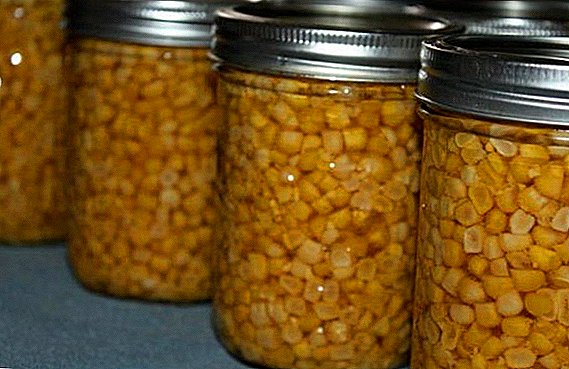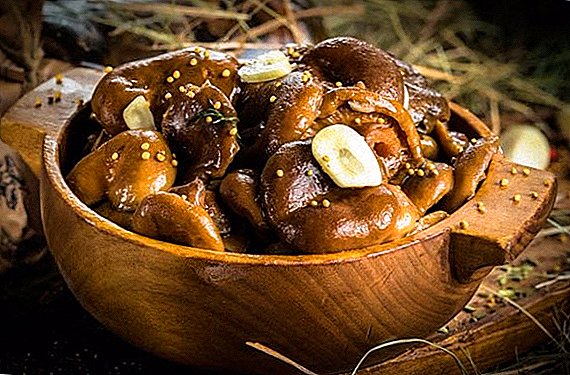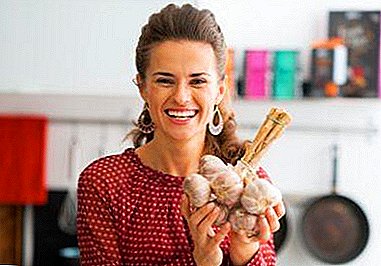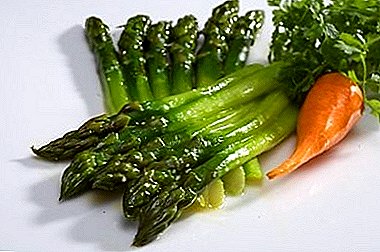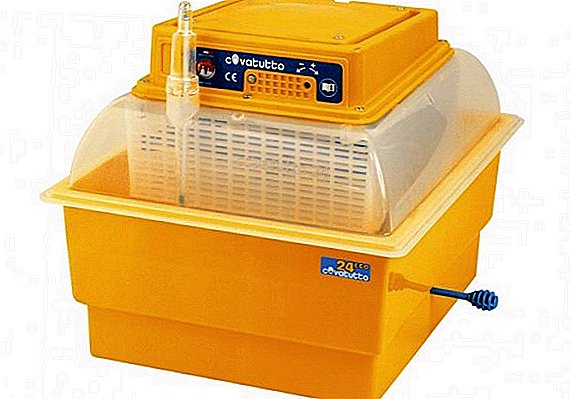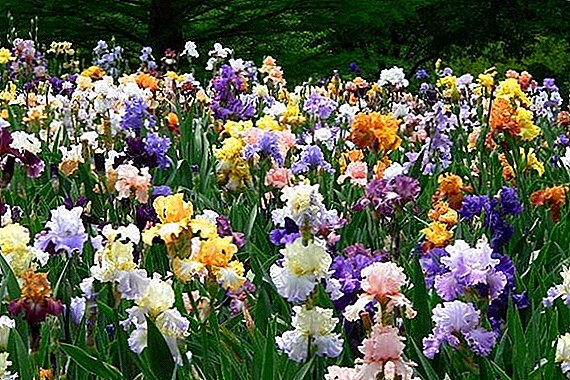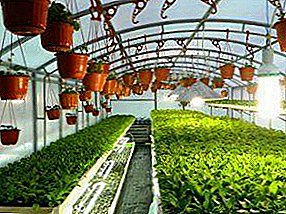
Choosing a field of activity for a business, pay attention to the cultivation of greenery. Having built a good greenhouse, you can shoot several harvests a year and quite good earning. For success, it is important to choose the most popular cultures and properly organize distribution channels.
For household needs can be limited to a small greenhouse or mini wall greenhouse.
But those who plan to establish contacts with shops and sell greens in solid volumes, need industrial greenhousesequipped according to the rules. They allow you to plant seeds and harvest crops throughout the year.
Greenhouses for green: the best ideas from farmers
How to grow greens in the greenhouse all year round for business? The best facilities for growing green - polycarbonate greenhouses with double glazing on a metal stainless frame. They create the effect of a thermos, keeping the optimum temperature from 15 to 28ºC.
The glass is too fragile and expensive, and the plastic film does not provide stable temperatures in the room. Industrial greenhouses have impressive size (from 0.5 hectares and above). Novice farmers it is worth building a construction of 100-120 square meters. m, in the future greenhouse can be expanded.
The shape of greenhouses for greenery can be different. In cold regions, pitched structures are most popular, providing good insolation and not allowing snow to accumulate on the roof. It is also possible to use traditional arched greenhouses. For cultivation in the ground low buildings will do, shelving greenhouses have more impressive dimensions.
Green business: advantages and disadvantages
 Deciding to grow greenery on an industrial scale, important to know in advance about the pros and cons similar enterprise.
Deciding to grow greenery on an industrial scale, important to know in advance about the pros and cons similar enterprise.
Among the advantages of this business:
- the ability to shoot several harvests a year;
- greenhouses are suitable for any green cultures, from habitual to exotic;
- tall demand for fresh greens;
- in the winter and in the early spring the margin increases significantly and the profitability increases;
- possible cultivation by hydroponic, aeroponic or soil method;
- business even suits people not having much experience in agriculture;
- greenhouses minimize the risk of low yields.
Despite the obvious advantages, the business has some drawbacks:
- high costs for the construction and heating of greenhouses;
- in summer, there is high competition from homeowners;
- perishable productthat increases the reject rate;
- requires a large amount of fertilizer that increases the nutritional value of the soil;
- to increase income, it is necessary to operate with large volumes of products and constantly increase them.
What should be grown in greenhouses?
Experienced farmers believe that growing greens is the most promising option greenhouse business. Green cultures grow rapidly, taste is unchanged regardless of the method of cultivation.
Among the crops in particular demand:
- Green onions. For growing greenery suitable hybrid varieties that do not form bulbs. In the greenhouse planted a variety of varieties: batun, slizun, chives. Plants are not too demanding lighting, but need a large number of complex mineral and organic fertilizers. Green onions can be grown hydroponically or aeroponic way.
- Dill. It is very productive, quickly growing and requires frequent cutting. For growing need good moisture and lighting.
- Parsley. For cultivation in greenhouses using ordinary leaf and curly parsley, which is in great demand in stores. Highly demanding on the nutritional value of the soil, watering and lighting. At low temperatures, growth stops.
- Leaf salad. Any variety is suitable for growing, but fast-growing Iceberg, oak-leaved, and frieze are especially popular. Salad grows well in hydroponics, needs a lot of fertilizer and water.
 Very promising direction - the cultivation of greenery in miniature plastic pots. These containers are placed in cassettes and can significantly extend the life of greenery on the shelves.
Very promising direction - the cultivation of greenery in miniature plastic pots. These containers are placed in cassettes and can significantly extend the life of greenery on the shelves.
Dill, lettuce and parsley in pots attract attention and are eagerly bought up.
Cost price this way of growing almost equals traditional, and margins on this type of product are significantly higher. In pots you can grow not only the familiar greens, but also a variety of spicy herbs: mint, lemon balm, anise, cilantro, basil, rosemary, thyme.
Greenhouse equipment
Industrial greenhouses most often use hydroponic technology. They allow you to significantly save space and reduce the cost of finished products. Plants are grown in liquid nutrient solutions, without the use of soil.
Another option is soil tier cultivation. Along the walls of greenhouses racks are installed with a nutrient substrate in which seeds are sown. Shelf cultivation makes it possible to save on heating, increasing purely plants by 1 square meter. m greenhouses.
Greenhouse equipped with an airing system and heating. Industrial greenhouses are heated with pipes laid underground. To reduce the cost of electric heating, innovative methods are widely used: biofuels, solar panels, the use of infrared cables. It is best to heat the structure in a combined way, using several methods at once.
Industrial greenhouses, designed for soil cultivation, should be equipped with a drip irrigation system. Lighting is also very important. Lamp under the ceiling is not enough, you need local lighting for each tier of the rack.
For the organization of a continuous process is recommended seeding lots. This allows you to take the crop, avoiding over-cooking. After harvest the soil is mixed with fertilizer, carefully loosened, watered and seeded with a new batch of seeds.
Expenses, incomes and profitability: calculation rules
 When calculating profitability it is important to consider all costs, both one-time and monthly. These include:
When calculating profitability it is important to consider all costs, both one-time and monthly. These include:
- land lease;
- registration of a legal entity;
- construction and equipment of greenhouses;
- purchase of planting material and fertilizers;
- spending on electricity and water;
- tax payment;
- salary of hired staff;
- packaging and labeling;
- shipping costs for the delivery of finished products.
Some items of expenditure may be excluded from the estimate. For example, land owners will not be spent on rent, and small greenhouses don't need hired helpersthat excludes salary costs. Branded packaging is needed for large farms that have registered a trademark and are selling through retail chains.
According to the estimates of professionals, the cost of one polycarbonate greenhouse per 100,000 square meters. m start from 100 000 rubles. 10 000 rubles will have to spend on planting material, at least 15,000 rubles will be required for heating.
Profit depends on the chosen culture and method of implementation. The most profitable option is to sell through retail stores or catering chains. In the summer, a kilogram of greens can cost from 80,000 rubles, in winter the price rises to 150,000 rubles. This growth is associated with a decrease in supply and lack of competition from private farms.
The profitability of the business of growing greens is not too high. According to various estimates, it ranges from 15 to 25%. Industrial greenhouse pays off in 2-3 years, return on farm greenhouse medium size - 1.5-2 years. Profitability is much higher in regions with a warm climate.
In northern areas, the cost of greenhouse greenery increases significantly, reducing profits. Well-established logistics, an increase in the sales network and a thoughtful approach to heating greenhouses will help reduce costs.
Growing greens in a greenhouse as a business - uncomplicated but financially intensive process. To achieve success, large initial investments are required. Even before the construction of greenhouses it's worth thinking about a clear sales plan and calculate all the upcoming costs. To get started is to build a small greenhouse as an educational option. If the process goes well, it will be possible to significantly expand its farm.
Useful video:


